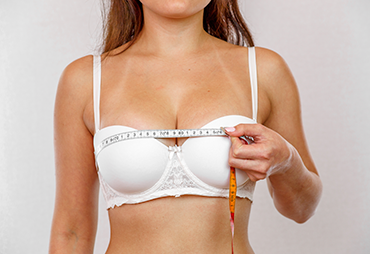Breast Reduction
 Although breasts are seen as one of the most important symbols of femininity, if they are not appropriately sized, upright and beautiful, they can become a heavy burden for women to carry. Conditions other than being aesthetically acceptable or good-looking cause not only appearance but also some serious health problems for the patient. For example, almost all of these people have serious back pain and spine problems. How big of a problem this can be can be understood by hanging a 4-5 kg load around your neck and standing for a few minutes. In addition, diaper rash often occurs under large breasts. In fact, these rashes can sometimes turn into open wounds. A sagging breast due to large size can lead to a hunchback in a woman. There may be numbness due to the pressure of the bra on the arm nerves. There may be difficulty in breathing. Daily physical activity may be limited. In addition, while large breasts create difficulties in choosing clothes, the woman’s disapproval also causes social and psychological problems. Especially in adolescence, breasts that show excessive growth (gigantomastia) can cause serious adjustment problems in patients. For the reasons listed above, it would not be wrong to argue that breast reduction surgery, although it seems like one of the cosmetic surgeries performed to improve the external appearance of the woman, is actually a functional surgery, not an aesthetic one.
Although breasts are seen as one of the most important symbols of femininity, if they are not appropriately sized, upright and beautiful, they can become a heavy burden for women to carry. Conditions other than being aesthetically acceptable or good-looking cause not only appearance but also some serious health problems for the patient. For example, almost all of these people have serious back pain and spine problems. How big of a problem this can be can be understood by hanging a 4-5 kg load around your neck and standing for a few minutes. In addition, diaper rash often occurs under large breasts. In fact, these rashes can sometimes turn into open wounds. A sagging breast due to large size can lead to a hunchback in a woman. There may be numbness due to the pressure of the bra on the arm nerves. There may be difficulty in breathing. Daily physical activity may be limited. In addition, while large breasts create difficulties in choosing clothes, the woman’s disapproval also causes social and psychological problems. Especially in adolescence, breasts that show excessive growth (gigantomastia) can cause serious adjustment problems in patients. For the reasons listed above, it would not be wrong to argue that breast reduction surgery, although it seems like one of the cosmetic surgeries performed to improve the external appearance of the woman, is actually a functional surgery, not an aesthetic one.
Reduction Mammaplasty
The aim of breast reduction surgery is to reduce the mass of the breasts in harmony with the body, as well as to give a natural appearance. Thus, at the end of the operation, not only the problems listed above are eliminated, but also a breast appearance that is pleasing to the person when he looks at it. The self-confidence of the person is restored, his adaptation to social life is facilitated, and the psychological problems related to the appearance of his breasts, if any, are alleviated.
Breast reduction surgery is an intervention with moderate difficulty and inconvenience when compared to other aesthetic surgeries. In addition to the routine tests that should be done before the surgery, mammography and breast ultrasonography can also be performed when needed. The surgery is performed under general anesthesia and usually takes 3-4 hours. In order for the results to be obtained in breast reduction surgery to make the patient happy, first of all, the patient’s willingness to undergo such an operation should be evaluated, and the expected result should be fully understood in one or several meetings. However, after that, the physician should provide detailed information about the extent to which the patient’s expectations can be met. It should not be forgotten that success in all aesthetic surgeries can be achieved when the right surgery for the right patient is performed using the right techniques.
Different methods are used according to the size and shape of the breast in reduction surgery. The final scar left in some breasts may be only around the nipple, in others it may be in the form of an inverted T, and in others it may be in the form of a vertical line with the nipple. This is basically directly proportional to the amount of breast reduction. Post-operative scars are evident at the beginning, but may become vague over time depending on the wound healing character of the patient. The degree of postoperative scars depends on the size of the breast, the surgical method used and finally the scarring feature of the patient’s skin. The postoperative period is generally comfortable. Pain is minimal and can be controlled with ordinary pain medication. However, movement, especially arm movements, can induce pain. Usually, drains are placed in both breasts and removed within 24-48 hours. The most important complications in the early period can be listed as bleeding, infection and tissue loss due to the deterioration of the blood circulation of the tissue. The hospital stay of the patient is usually 1 day. The first dressing is opened after 2-3 days, the patient is dressed in predetermined underwear and the patient can take a shower. Stitches are removed after 7-10 days. There may be swelling in the early period, numbness in the nipple and purplish discoloration on the skin. These disappear on their own in a short time. The patient can return to work after an average of 1 week. It is recommended to stay away from heavy sports for 3 weeks. Aesthetic breast reduction surgery generally gives good and permanent results.
